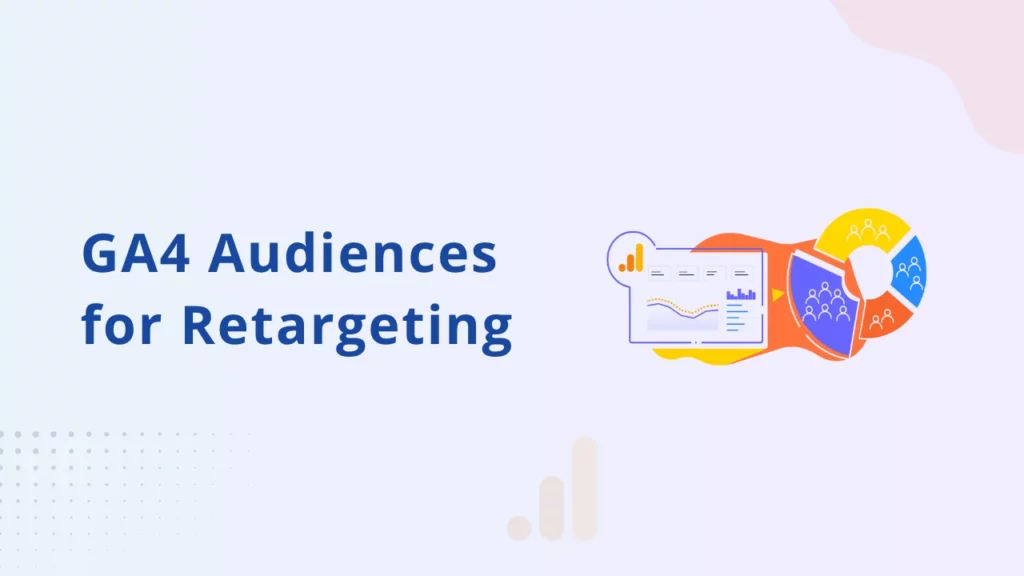If you’re a marketer looking to get more from your Google Analytics 4 for e-commerce data, you’re in luck. GA4 comes with a built-in audience builder that lets you easily segment users based on what they do on your site, no code or developer help is required. Want to retarget cart abandoners or people who viewed a product but didn’t buy? You can do it in just a few clicks.
Let’s walk through how to set up these audiences and use them in your Google Ads campaigns.
What Are GA4 Audiences (and Why Should You Care)?
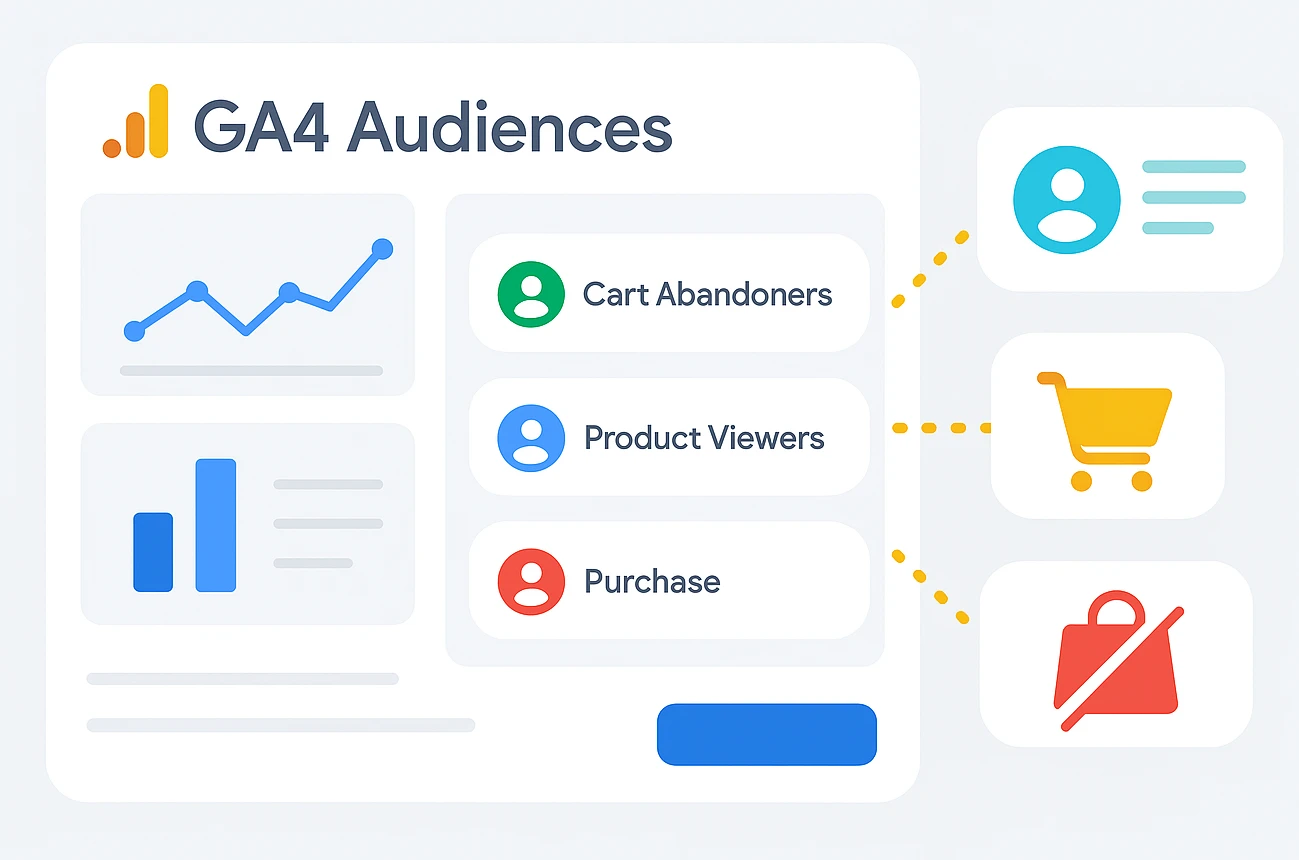
GA4 audiences are simply groups of users who behave in a similar way on your website or app. For example, you might want to target people who looked at a product but didn’t make a purchase. With GA4, you can set up these groups and use them to power your Google Ads campaigns.
⚠️ Heads up: GA4 audiences only start collecting users from the moment you create them.
They won’t include people who visited your site before the audience was set up.
What You’ll Need Before You Start
Make sure you have these basics covered:
- A GA4 property that’s already collecting data
- Google Signals turned on
- Your GA4 property linked to your Google Ads account
- Personalized ads enabled
- The right permissions in both GA4 and Google Ads
These steps make sure your audiences sync properly with Google Ads.
Step-by-Step: Creating GA4 Audiences (No Code Needed)
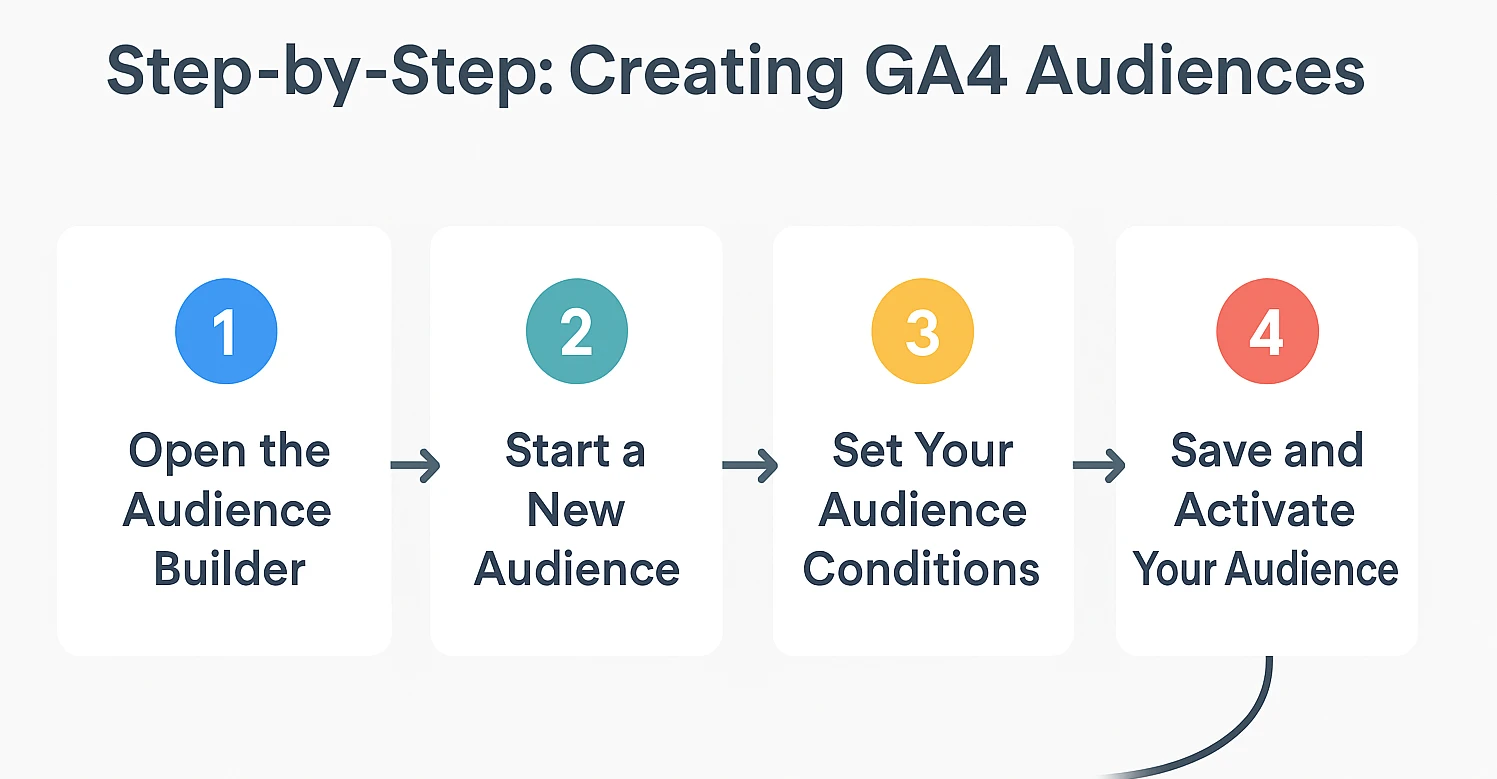
Step 1. Open the Audience Builder:
In your GA4 property, go to “Admin.” > Under “Property,” click on “Audiences.”
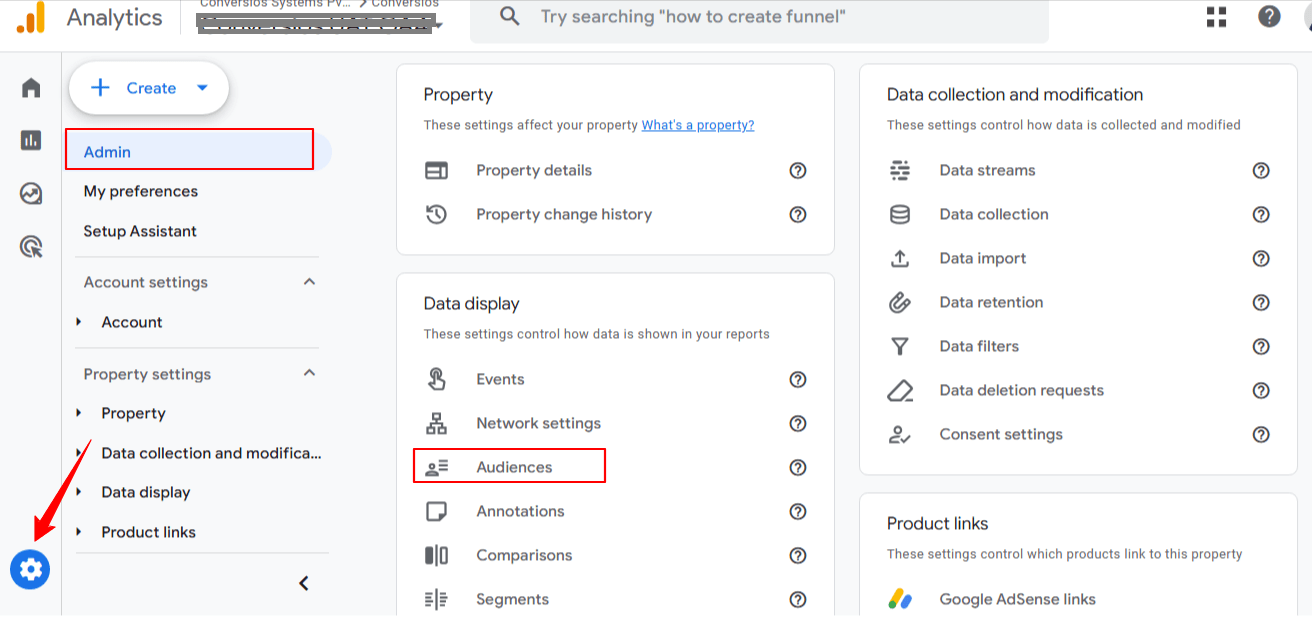
Step 2. Start a New Audience: Click “New audience.” > Choose a template or start from scratch.

Step 3. Set Your Audience Conditions: Use the visual builder to define who belongs in your audience.
Here are two popular examples:
- Cart Abandoners: Users who added something to their cart but didn’t complete the purchase.
- Product Viewers (No Purchase): Users who viewed a product more than once but haven’t bought it.
You can also set how long people stay in the audience (like 30 or 90 days).
Step 4. Save and Activate Your Audience:
Give your audience a clear, descriptive name> Click “Save.”
That’s it! GA4 will now start adding new users who meet your criteria (but remember, it won’t include users from before you set up the audience).
Using GA4 Audiences in Google Ads
- Make sure your GA4 property is linked to Google Ads and that Google Ads conversion tracking is set up for accurate measurement.
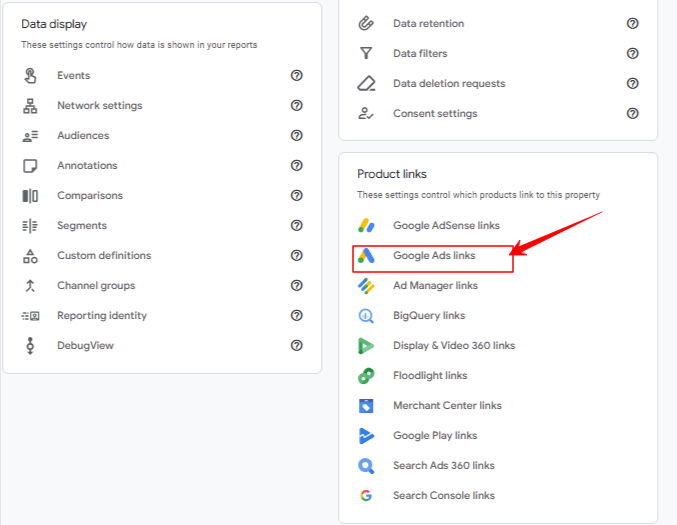
- In Google Ads, go to Tools >Shared Library> Audience Manager.
- Check if your new GA4 audience appears under “Your data segments.”
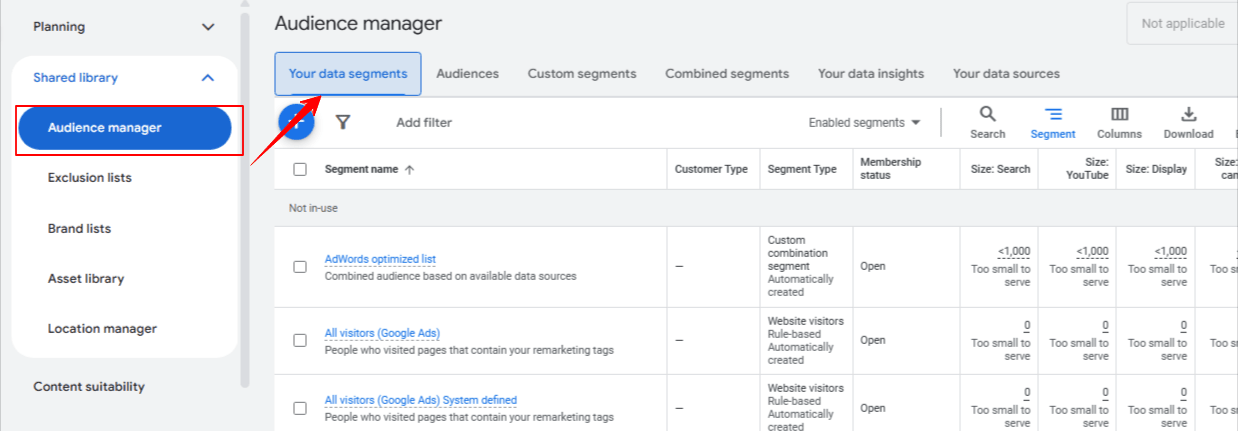
If you don’t see it after 48 hours, double-check that:
- Google Signals is enabled
- Personalized ads are allowed
- Your audience is large enough to be used in campaign.
Pro Tips for Better Audience Targeting
- Keep audience rules simple and easy to understand.
- Use clear, consistent names so you know exactly who’s in each audience.
- Match your audience duration to your sales cycle. If you’re running e-commerce campaigns, you’ll also want to optimize your Google Shopping Ads for better performance.
- Start with GA4’s built-in templates if you’re new to this.
Common Mistakes to Avoid
- Forgetting to link your Google Ads account.
- Make your audience rules too narrow (which can result in tiny audiences).
- Expecting to see past users in your new audience (remember, it’s not retroactive). For more troubleshooting tips and solutions, see our guide to common GA4 problems with Shopify.
- Not checking permissions or ad settings.
Final Thoughts: Just Get Started
Don’t overthink it! Pick one simple audience to start with like “viewed product but didn’t buy.” Set it up, connect it to Google Ads, and see how it performs. Once you get the hang of it, you can experiment with more advanced segments.
You don’t need fancy tools or a developer, just a good understanding of your users and some smart targeting rules. If you want to save even more time, tools like Conversios can automate the setup for you.
Frequently Asked Questions
Q. How long does it take for a GA4 audience to show up in Google Ads?
It can take up to 48 hours.
Q. Can I use GA4 audiences outside of Google Ads?
Right now, GA4 audiences are mainly for Google’s own tools.
Q. What’s the difference between a segment and an audience in GA4?
Segments help you analyze past data. Audiences let you target users as they meet your rules.

